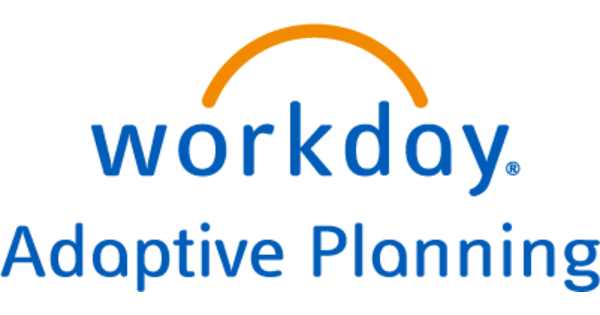In the world of financial planning and analysis (FP&A), think of Workday Adaptive Planning and Planful as two high-caliber navigational tools. Just as a captain chooses the best compass for a voyage, FP&A professionals must select the tool that aligns best with their organization’s objectives and operational demands.
While both tools are commendable in their own right, understanding their individual strengths and features is pivotal for decision-making. This post offers a side-by-side examination, helping experts like you find the optimal match for your dynamic needs.
Workday Adaptive Planning: A New Era of Financial Planning
Workday Adaptive Planning stands as a beacon for modern enterprise planning and analysis. It caters to organizations across the spectrum, from emerging businesses to well-established conglomerates. By seamlessly unifying the intricate processes of organizing, planning, budgeting, modeling, and analyzing financial data, it opens new vistas for efficiency and adaptability.


Key Features
- Consolidation: This goes beyond mere data collection by integrating spreadsheets and disparate data sources, transforming them into a cohesive and efficient management system.
- Modeling and Analytics: Elevates decision-making with robust modeling capabilities and insights that are customizable to fit organizations of diverse sizes and complexities.
- Agility: Provides a nimble cloud planning application that ensures businesses remain not just reactive but proactive to global shifts and fluctuating market conditions.
Real-World Application
Workday Adaptive Planning’s relevance is vividly seen in contexts such as multinational corporations, where it serves as a nexus for budgeting across varied departments. It amplifies financial forecasting speed and forges a more dynamic collaboration among stakeholders.
Target Audience and Ideal Usage
- Who Can Benefit from Workday Adaptive Planning? Financial professionals, FP&A teams, and those encumbered with legacy spreadsheet systems for budgeting and forecasting will find this platform transformative.
- Addressing Core Challenges: Workday Adaptive Planning is not just an upgrade; it’s a solution. It tackles the real-world problems of broken links, data integrity lapses, and version control errors that often plague traditional spreadsheet methods.
- Universal Appeal: Whether a small startup hungry for growth or a multinational behemoth, any business requiring a sophisticated yet user-friendly software solution to gather, order, and analyze financial data can harness the power of Workday Adaptive Planning.
Valuable Insights for FP&A Professionals
- Adoption Strategy: For teams grappling with outdated and cumbersome spreadsheet systems, transitioning to Workday Adaptive Planning could be a strategic move to ensure data accuracy and real-time collaboration.
- Integration Opportunities: The platform’s consolidation feature allows an elegant integration with existing systems, offering a pathway to streamline and elevate current financial processes.
- Future-Proofing: Embracing Workday Adaptive Planning is not merely about solving present challenges but preparing for future growth and change. Its adaptability ensures that the financial planning process remains resilient and aligned with business evolution.
Workday Adaptive Planning’s nuanced features and broad applicability make it a compelling choice for professionals seeking to innovate and optimize their FP&A operations. Its alignment with both contemporary needs and forward-thinking strategies marks it as a cornerstone for a new era of financial planning.
Planful: The Pioneer in FP&A Software Solutions
Planful stands as a beacon in the complex landscape of financial performance management cloud software. With a client base exceeding 1,000 worldwide, it’s not merely a tool but a strategic partner to the Office of the CFO, providing the functionalities to plan, budget, and report with unprecedented precision and confidence.


Key Features and Advantages
- End-to-End FP&A Process: Beyond offering a comprehensive platform that spans planning, budgeting, consolidations, and reporting, Planful has the versatility to align with unique business structures, whether a multi-layered parent-subsidiary model or a stand-alone entity.
- Accelerated Cycle Times: Critical financial processes are no longer bottlenecks. The intelligent design of Planful empowers swift decision-making that aligns with the rapid pace of today’s business environment.
- Visual Analytics: Far from mere charts, Planful’s visual analytics provide a depth of understanding that speaks to both the mind and the eye, offering insights that resonate.
- Private Equity Backing: Backed by Vector Capital, Planful’s financial foundation is not only stable but poised for growth, a reflection of a vision that transcends quarterly numbers.
Example: The Boston Red Sox tapped into Planful’s prowess to refine their financial reporting accuracy, making strides by reducing errors by 25% and cutting reporting time dramatically.
Who Uses Planful?
Planful isn’t restricted to the financial elite. Its dynamic, flexible, and intuitive design makes it a tool for Finance and Accounting professionals of varying skills and experience. From structured navigation that mirrors unique business processes to an Excel-like interface that feels familiar, Planful is accessible.
What Makes Planful Stand Out?
- User-Friendly Onboarding: Its low-code solution makes onboarding effortless and administration accessible even without IT support.
- Customizable Platform: Whether for finance teams or front-office and production teams, Planful’s customizability allows it to mold itself to the unique contours of your business.
- Automated Report Delivery: Forget checking repeatedly for published reports; Planful can be configured to deliver them right to you.
- Robust Support: With a support team always at the ready, continuous process improvements aren’t just a goal but a daily reality.
Planful Key Insights
Planful stands out as a luminary in the world of financial performance management cloud software, designed with the acumen and intricacy that FP&A professionals demand. So, let’s delve into the critical aspects that set it apart. Consider the key insights for you to leverage within your unique work environment.
A Dynamic, Flexible, and Capable EPM
- User Interface: Planful offers a streamlined and intuitive interface, with navigation that can be tailored to mirror your organization’s unique processes, lending itself to an effortless user experience.
- Security: Robust and segmented security ensures that data integrity is never compromised, aligning with stringent corporate standards.
- Ownership and Administration: Through its Software-as-a-Service (SaaS) model, Planful grants FP&A teams full ownership and administration rights. Whether in a complex parent-subsidiary relationship or a singular corporate entity, its high configurability supports local customization while preserving overarching standardization.
- Excel-like Experience: Planful’s interface, akin to Excel, speaks the language of finance professionals, making it accessible to both novices and seasoned experts.
Empowering FP&A Teams to Excel
- User-Friendly Onboarding: New team members are onboarded seamlessly, with a low-code solution that doesn’t call for specialized IT skills.
- Responsive Reporting and Analysis: Ad-hoc reporting and analysis are not a challenge but an opportunity, meeting even last-minute requests from senior leadership.
- Backup Administrators: Emergencies are mitigated with the ease of having backup administrators, keeping things smooth even during unexpected absences.
- Ready Support: Planful’s Support and Customer Success Management (CSM) teams are always poised to assist, facilitating continuous improvements.
Incredibly Versatile and Supportive
- Customizable Platform: The platform bends, not breaks, to your needs. Its malleable design can shape an easy-to-use finance platform for front-office and production teams, too.
- Automated Reporting: Automation takes the labor out of waiting for published reports, serving them right when available.
- Organized Review: Planful’s organization of reports, whether individual or grouped, adds clarity to the review process, saving valuable time.
Comparing Workday Adaptive Planning and Planful: A Side-by-Side Analysis
Both are powerhouses in their own right, offering an array of features and capabilities. This section meticulously contrasts these platforms, providing incisive insights and actionable advice tailored for the discerning FP&A professional.
Planning and Budgeting
Workday Adaptive Planning:
- Adaptive Modeling: Enables a flexible and agile approach to planning, accommodating changes in business dynamics.
- Collaborative Planning: Fosters real-time collaboration across departments and hierarchies.
- Integrated Forecasting: Offers a holistic view by integrating with various data sources, for precise forecasting.
Planful:
- End-to-End Process: Comprehensive handling of planning, budgeting, consolidations, and reporting, facilitating a unified workflow.
- Accelerated Cycle Times: Enhances efficiency by expediting critical financial processes.
Advice: Consider Workday for a more collaborative and integrative approach, while Planful might be more suitable for organizations seeking a complete end-to-end solution.
Reporting and Analysis
Workday Adaptive Planning:
- Real-time Analytics: Provides real-time insights, aiding immediate and data-driven decisions.
- Customizable Reporting: Tailor reports to specific needs, enhancing comprehension and relevance.
Planful:
- Visual Analytics: Aesthetically designed visual representations, allowing for in-depth understanding and insights.
- Automated Reporting: Enables automatic sending of reports as they become available, streamlining the review process.
Advice: If visual insights and automation are vital for your operations, Planful may edge ahead. However, Workday’s real-time analytics could be crucial for organizations needing immediate insights.
User Experience and Support
Workday Adaptive Planning:
- Intuitive Interface: Easy navigation for users of varying abilities, fostering an inclusive user environment.
- Responsive Support: Known for swift and personalized support, enhancing user satisfaction.
Planful:
- Flexible Customization: Adapts to unique business processes, including parent-subsidiary models.
- Empowered Administration: Enables non-IT resources to fully own and administer, emphasizing user independence.
Advice: For organizations demanding a tailored and highly configurable interface, Planful may resonate more. Conversely, Workday offers an intuitive experience, appealing to a broader user base.
The Guided Choice
While both Workday Adaptive Planning and Planful hold esteemed positions in the sphere of FP&A, their nuanced differences are key to informed selection:
- For organizations seeking a modern solution to transition from legacy systems, emphasizing adaptability, integration, and a wide range of applicability, Workday Adaptive Planning could be the answer.
- For those requiring a strategic partner offering end-to-end alignment, swift decision-making, and a solution resonating with both finance and non-finance teams, Planful may be the ideal choice.
In either case, the decision must resonate with the unique demands, aspirations, and challenges of your organization. Engaging with either of these platforms is not merely a purchase but an investment in financial stability, strategic agility, and a vision for future growth. Both offer substantial value, but their alignment with your specific needs is where their true potential lies.
By understanding the strengths and applicability of both platforms, you can elevate your FP&A process to a level of excellence. As a result, it will not only meets the demands of today but anticipates the opportunities of tomorrow.

